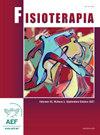神经肌肉绷带治疗面瘫的有效性:准实验研究
Q4 Health Professions
引用次数: 0
摘要
背景与目的面瘫损害了面部肌肉组织的功能,传统的物理治疗有局限性,特别是在早期阶段。本研究利用House-Brackmann (HBS)和Sunnybrook (SUN)量表分析了神经肌肉贴敷(NMT)作为一种治疗选择的有效性,并分析了其对面部功能和联动性减少的影响。材料与方法对34例面瘫成人患者进行为期3个月的准实验研究,根据到诊顺序和可获得性将其分为对照组(常规治疗)和实验组(NMT)。两组都接受了每周两次的治疗。干预前和干预后的评估由独立评估者使用HBS和SUN量表进行。评估顺序随机化。采用Wilcoxon和Mann-Whitney U检验进行统计学分析(P < 0.05)。结果基线组间比较,差异无统计学意义(P > 0.05)。干预后,实验组在面部功能方面表现出更大的改善(SUN:中位数95.5 vs. 34.5; P < 0.05),麻痹严重程度减轻(HBS:中位数1 vs. 3.5; P < 0.05)。两个量表的效应量都很高(r = 0.81和r = 0.84)。结论snmt对早期未表现出良好进化的面瘫患者具有改善面瘫功能、减少面瘫联动的作用。它可能是一种非侵入性的治疗选择。建议进行更大样本量和亚组分析的进一步研究。本文章由计算机程序翻译,如有差异,请以英文原文为准。
Eficacia del vendaje neuromuscular en parálisis facial: estudio cuasiexperimental
Background and objective
Facial palsy compromises the functionality of the facial musculature, and conventional physiotherapy treatments show limitations, especially in early stages. This study evaluates the effectiveness of neuromuscular taping (NMT) as a therapeutic alternative, analyzing its impact on facial function and synkinesis reduction using the House-Brackmann (HBS) and Sunnybrook (SUN) scales.
Materials and methods
A three-month quasi-experimental study was conducted with 34 adults diagnosed with facial palsy, assigned to a control group (conventional treatment) or an experimental group (NMT) based on order of arrival and availability. Both groups received two weekly sessions. Pre- and post-intervention evaluations were performed using the HBS and SUN scales by an independent evaluator. Assessment order was randomized. Wilcoxon and Mann-Whitney U tests were used for statistical analysis (P < .05).
Results
At baseline, no statistically significant differences were found between groups (P > .05). After the intervention, the experimental group showed greater improvements in facial function (SUN: median 95.5 vs. 34.5; P < .05) and reduction in paralysis severity (HBS: median 1 vs. 3.5; P < .05). Effect sizes were high for both scales (r = 0.81 and r = 0.84).
Conclusions
NMT was effective in improving facial function and reducing synkinesis in patients with facial palsy who had not shown favorable evolution in early stages. It may represent a non-invasive therapeutic option. Further research with larger sample sizes and subgroup analysis is recommended.
求助全文
通过发布文献求助,成功后即可免费获取论文全文。
去求助
来源期刊

Fisioterapia
Health Professions-Physical Therapy, Sports Therapy and Rehabilitation
CiteScore
0.50
自引率
0.00%
发文量
37
期刊介绍:
Publicación Oficial de la Sociedad Española de Fisioterapeutas. Sus páginas ofrecen desde artículos originales hasta revisiones, pasando por el estudio de casos o los actos más importantes relacionados con la especialidad.
 求助内容:
求助内容: 应助结果提醒方式:
应助结果提醒方式:


